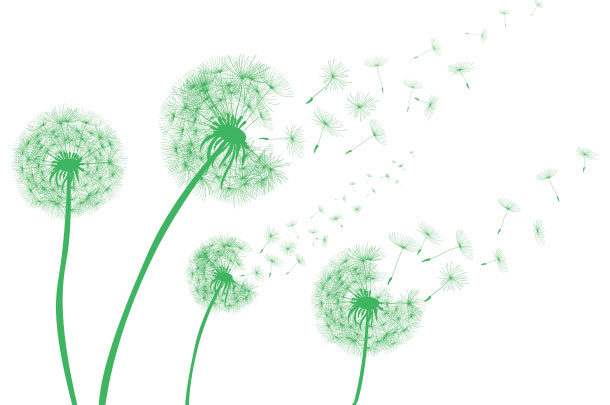Some years, by some happy accident, producing forage goes well and the end product is not only marketable but of exceptional quality. If this happens, and the reason for it seems unclear, then the chances of repeating these results will require an even greater stroke of luck. This is what John Winchell, territory manager for Alltech in Buffalo, New York, calls “hitting the bullseye,” and he argued that with a little effort, the bullseye can be hit year after year.
On Dec. 3, Winchell presented the final webinar of the Ontario Forage Council’s Forage Focus webinar series titled “Hitting the Bullseye on Forage Quality.” In his presentation, Winchell, who specializes in dairy nutrition and mycotoxin control, described several ways forage producers can tweak their cutting schedule to optimize forage quality.
Dandelion phenology
The concept of plant phenology describes plant life-cycle stages and their timing. Winchell explained phenology and its application in forage production through the example of dandelions.
After tracking growing degree days of dandelions and grasses for many years, Winchell observed the growing patterns of the dandelions and the grasses were often in sync. “When our growing degree days for dandelions line up, when we have dandelions that are yellow to soft white, where the white is climbing up the bottom of that dandelion bloom, when it’s starting to go up before it goes to seed, we should be going into the field and making our grass,” Winchell said.
Winchell noted this rule works best for alfalfa crops being grown for haylage. However, observing dandelion life-cycle stages can also be useful for timing the cutting of mixed grasses and winter cover crops. These crops should be cut earlier. Winchell said his experience tracking growing degree days as they line up with dandelions has indicated these crops should be taken off the field about one week prior to the near-seed stage described above.
“Don’t look at the dandelions that are up against the house or up against the barn or facing the sun; look at your whole field,” Winchell said. Once the dandelions in the field begin to wilt, Winchell said it is time to “put the planner away and go get your grass.” By cutting at the stage that coincides with the dandelions wilting, a schedule will be set for the rest of the season’s cuttings. Thus, using dandelion phenology along with other tools can set the stage for haylage quality of all the cuts.
Winchell’s aim is to determine the best time to cut haylage in order to find a happy medium between yield and forage quality in an effort to improve feed efficiency. By using dandelions as a guideline to achieve this timing, producers are more likely to hit their forage quality “bullseye.”
Other tips to get the timing right
Winchell recognized the importance of harvest analytics, but he noted it can be equally valuable to get out in the field and assess its state and surroundings in real time. “It’s not just looking at the weather on your phone. It’s going out into the field; it’s looking at multiple things and tying up multiple things together to get it just right,” he said.
In addition to dandelion phenology, there are some other factors that can help set producers up with a strong cutting sequence for the year. Winchell suggested relying on seasonal weather patterns should be avoided. Looking at the calendar can help suggest when rain might come, but it can also cause some setbacks.
Winchell said producers should aim to get a first cutting in before the end of May or start of June, regardless of what weather patterns typically indicate. To explain this concept, he provided an example of when waiting for the rain can go wrong: “There’s the other side of the fence where [producers] go, ‘Oh, it’s going to rain for a week, I think I’m going to wait until after that rainfall comes through at the end of May and then make my first cut.’ Then what typically happens is by the time everything settles down, the guy that made their haylage prior to when the rain [was anticipated], he’s making his second cutting, probably at about the same time the other guy’s making his first cutting.”
There are several factors that go into producing high-quality haylage, but Winchell emphasized timing as a key factor to produce haylage to meet quality and quantity expectations.










